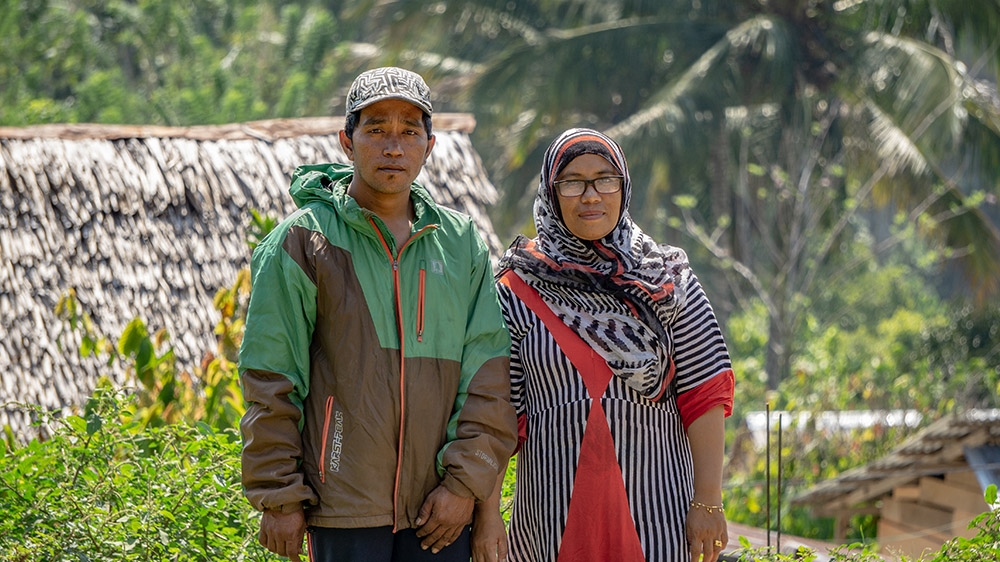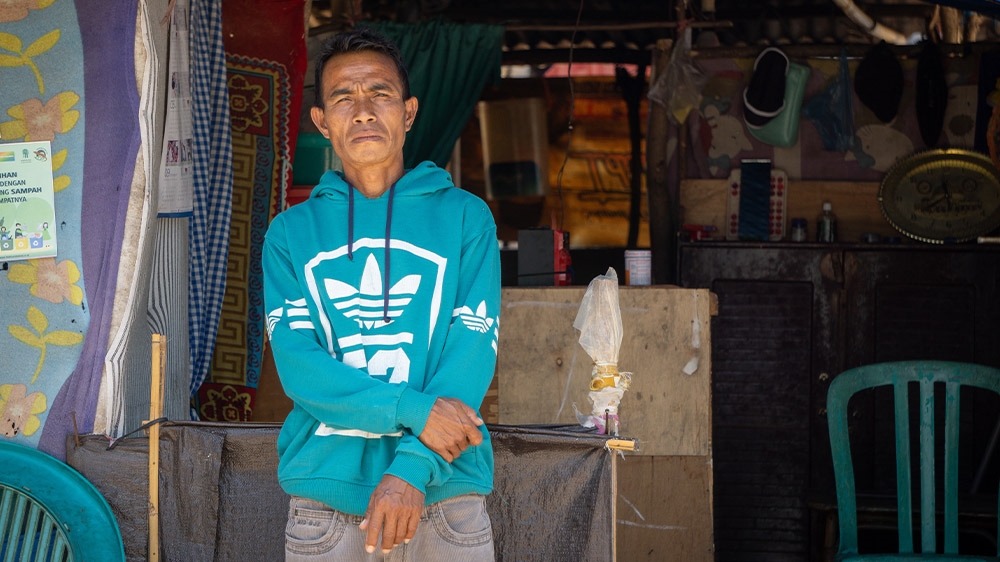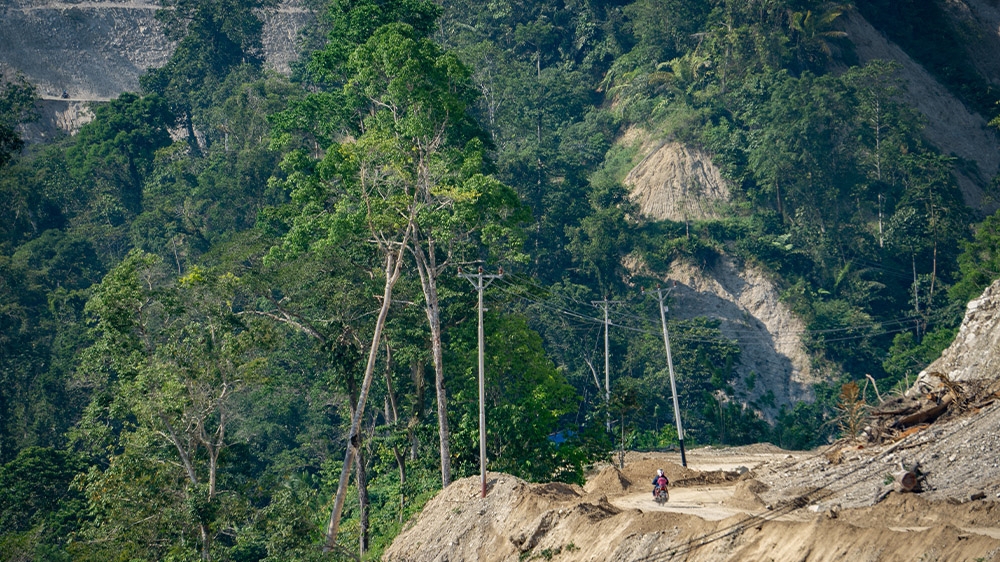Floods, mud: Sluggish progress a year after Indonesia disaster
Progress made in some areas of Palu, but residents say livelihoods have suffered and aid distribution has been slow.

Palu, Indonesia – For Ariyati, the disaster that took her mother’s life and that of more than 4,800 others a year ago has been followed by another unseen, but greater disaster.
Her village of Kulawi was almost completely destroyed when the magnitude 7.4 earthquake – the deadliest of 2018 – shifted along a more-than 160-kilometre (100-mile) crack stretching from the ocean floor to the mountains of Central Sulawesi, triggering a tsunami and horrific, neighbourhood-consuming liquefaction events.
Keep reading
list of 4 itemsHow is Afghanistan coping six months after deadly quakes?
‘Violent rumble’: 4.8 magnitude earthquake rattles New York City, northeast
Taiwan searches for 18 still missing after Wednesday’s earthquake
When Al Jazeera first visited Ariyati last October her biggest concern was building a new home and finding food after landslides triggered by the earthquake cut off the village.
In the last few months, however, Ariyati’s village and several others have been hit by extreme flooding, destroying their farmland.
“Everyone knows the people without homes because of the earthquake are suffering,” the 40-year-old teacher and mother-of-three said.
“But with the losses suffered by people hit by wave after wave of mud, whose lives depend on the farms of coffee and chocolate, who is more affected?”
The earthquake that struck in this part of Indonesia on September 28 last year severely damaged the region’s major infrastructure, including irrigation, hospitals, and schools. While Anutapura hospital, where half the building collapsed, has been cleared and sent funds for rebuilding, thousands of students still attend school in tents. Some 57,000 people remain homeless according to the Red Cross.

Complicated processes
Aid workers say recovery has not been as fast as they had hoped, as people are only just beginning to receive the government cash aid they were promised months ago.
The aid includes transferring money to specially set up bank accounts to rebuild damaged homes, cover basic living expenses for two months, and compensate families for the loss of their loved ones.
The Indonesian Red Cross (PMI), like many aid groups, only has the resources to focus on a few thousand families, and looks to the government for direction.
We have a new saying here, 'Don't go out at night.'
“We have to involve everyone from the central local government, including local banks, because we have thousands of bank accounts that have to be opened [to distribute cash aid],” said Syaiful Alam, the head of operations.
Ariyati has received compensation funds of 15 million rupiah ($1,059) for her mother’s death. But she is still waiting for the money to cover the rebuilding and living expenses.
The new reconstruction in Kulawi was planned before the earthquake or was built by private foundations. Or, like Ariyati’s new home, it was scavenged from the remains of collapsed houses.
Building a house of stone and concrete is too dangerous, she told Al Jazeera.
“We have a new saying here, ‘Don’t go out at night’,” Ariyati’s cousin Maruf added. Landslides and floods could happen at any moment, and dusk has already been branded a disaster. It was the time when the earthquake hit last year.

‘Red Zones’
In the lowlands, the government is designing at least three new parts of the city, for residents who must be relocated away from newly-designated red zones; areas considered too risky for people to live.
Those areas include the beach hit by the tsunami and three liquefaction areas, Petobo, Balaroa, and Jono Oge. More than 10,000 homes will be built, each housing a family, and the first 1,600 will be moved in by December, the government says.
In Sigi’s valley just south of Palu city, flooding that hit three times has destroyed 80 percent of homes, drowning in mud any hope of rebuilding the already-crumbling village, the district’s disaster agency chief, Asrul Repadjori, said.
|
|
“The earthquake shook the soil loose in the mountains and created landslides, but now that soil has flowed into the rivers,” Repadjori said.
“The rivers can’t hold as much water, and pushes water over the banks and into homes when it rains.”
Extreme flooding has affected at least 500 households, but the earthquake knocked out irrigation last year and the system remains dry, preventing thousands more from making a living.
A $300m loan from the Asia Development Bank helped finance the construction of a small dam to feed new irrigation channels, and it is supposed to be completed in December.
Samsun who lives in Sigi’s lowlands has planted his old rice fields with corn because the crop does not need as much water. But the income is paltry.
“We already couldn’t live in our home after the earthquake,” Samsun said from his tarpaulin tent an hour south of Palu. “We can’t live off the income from corn farming, it’s not even a full harvest.”
“The simplest problems are getting clean water, in the temporary shelters or even their own homes,” said Chandra, a coordinator at Indonesian NGO ACT, which helps shelters and water supply.
“But, irrigation is the most pressing need. It was heavily hit by the earthquake and it still hasn’t been directed towards where it needs to go. Farmers depend on this for their living.”

Water – too much, too little
Shelters are a continuing problem, said Dino Satria, local lead for Save the Children’s Indonesian arm, Yayasan Tunas Cilik. Like many NGOs active in the area, they can only help a few thousand families and rely on the authorities for guidance.
“The government is trying to provide relocation for sites where liquefaction happened,” Dino said. “It’s not an easy task.”
Temporary shelters in rural areas, where Ariyati lives, are easier because people can find more land, or live with family members. On the fringes of the city, however, some still live in the tents they built last October, before aid groups starting building temporary shelters.
While many of the new shelters have not yet been occupied, either due to bureaucracy or people being reluctant to move again after spending a year setting up a new life somewhere else, the authorities estimate many more homes are still needed.

Several local and national aid groups have accused the government of dragging its feet in the recovery efforts, but given the scale of the disaster that befell Palu, PMI’s Syaiful says there is progress.
“If we go to all the areas affected, you can’t see that there was once a disaster here,” he said.
Back in the hills, Ariyati draws comfort from the funeral service she was able to hold for her mother.
“There were so many people! Everyone brought rice and chicken, and we slaughtered two cows,” she said. “It brought us together in disaster.”
But she worries about the future.
The earthquake destroyed the village water source and pipes laid to replace the broken system failed. Food distribution has stopped, and while the cocoa harvest used to bring in 6 million rupiah ($424) a month, now it has come to a halt.
Residents who once used to spend their days in the fields, now just sit around, waiting.
“How are supposed to fulfil our daily needs if we can’t make any money?” Ariyati said.